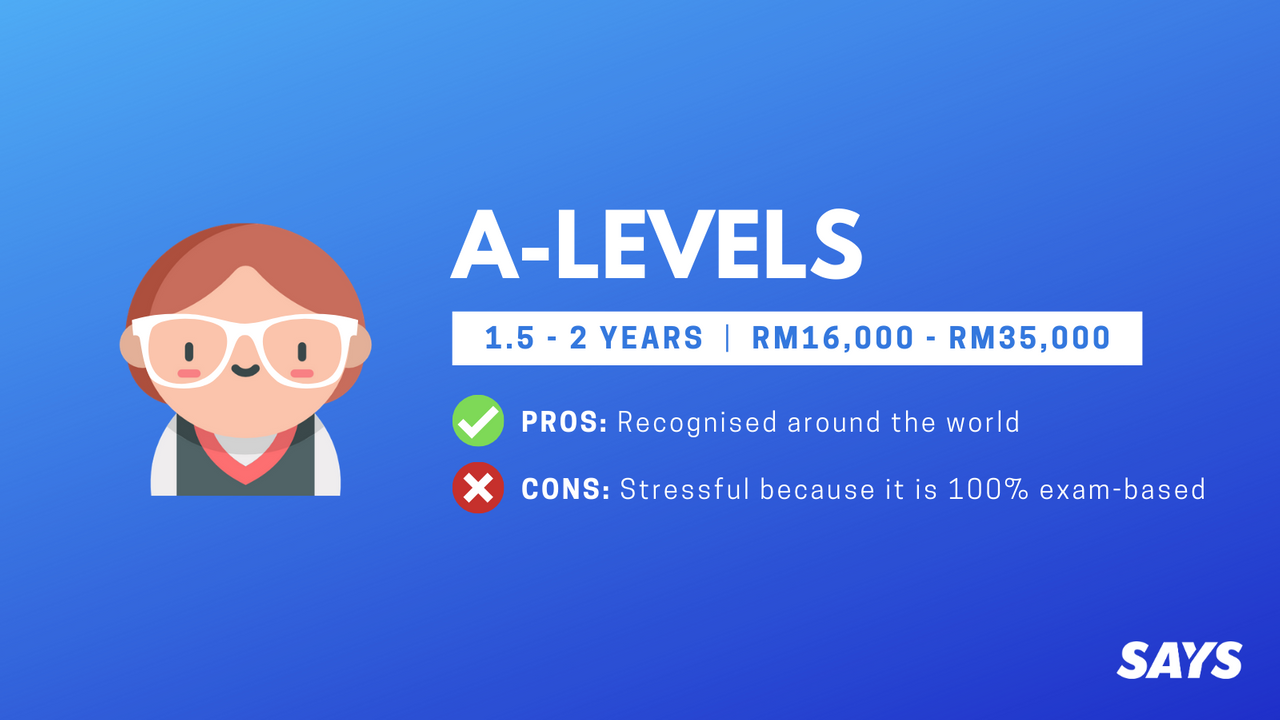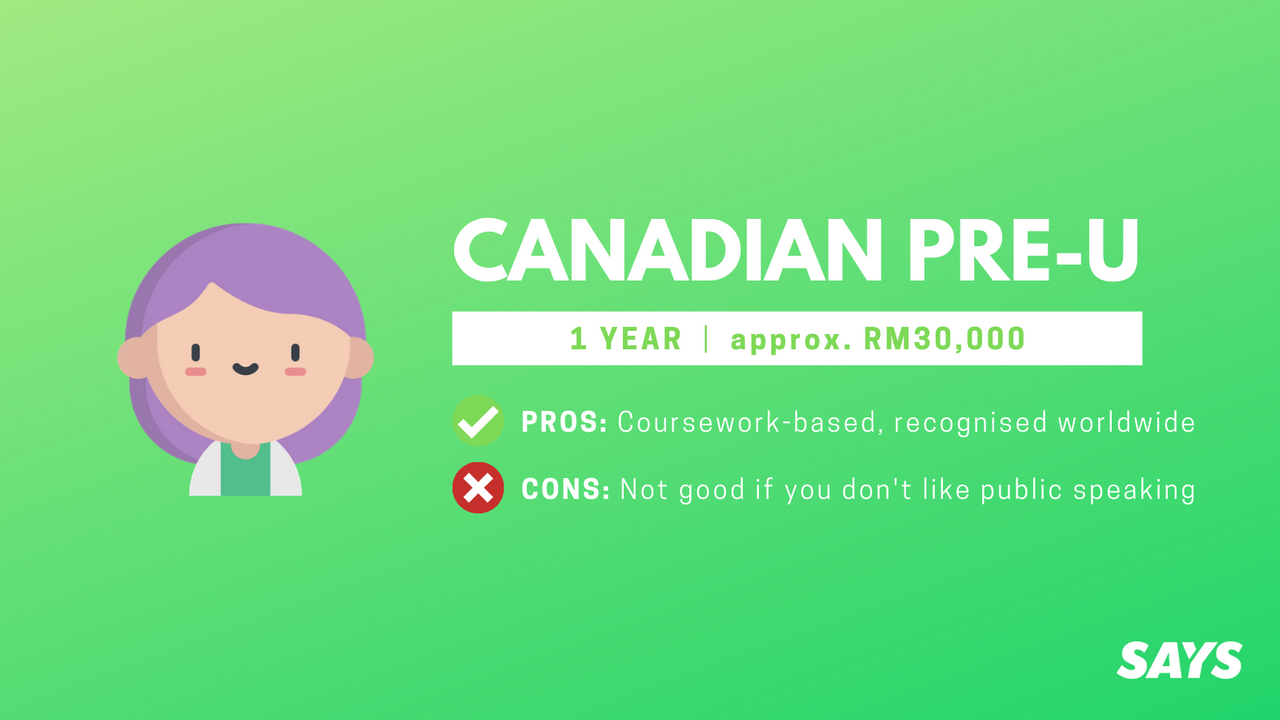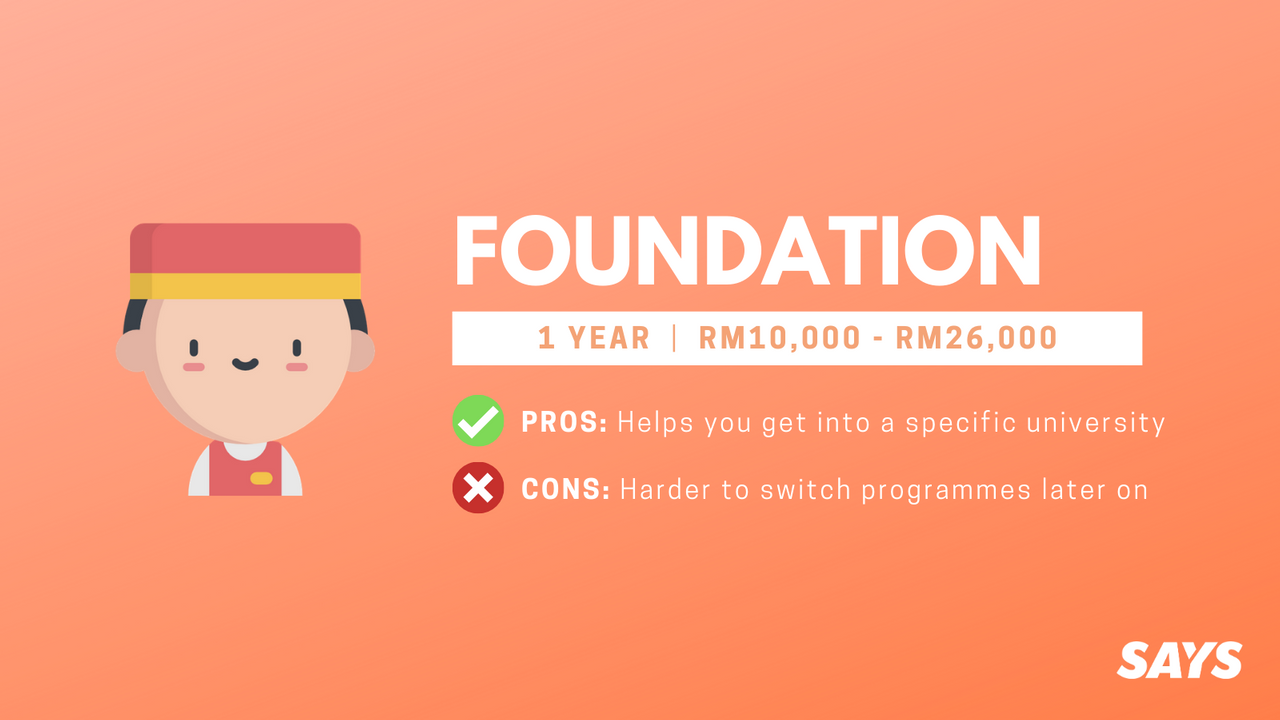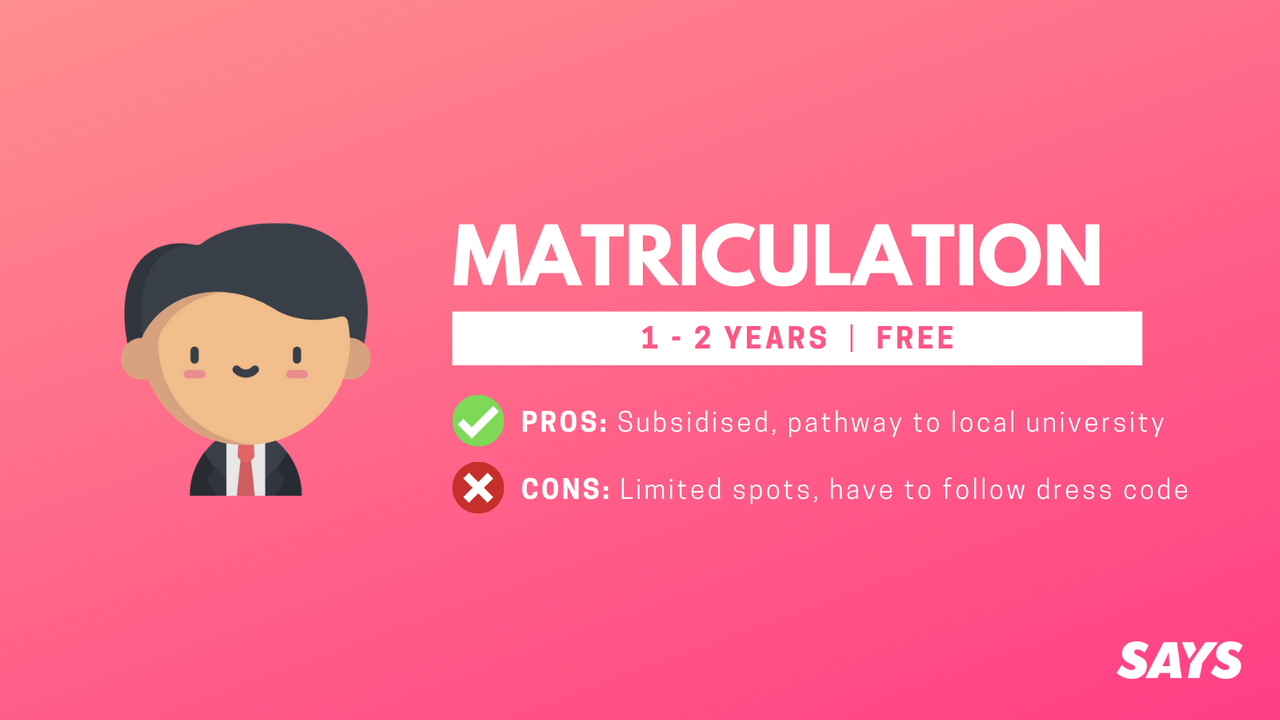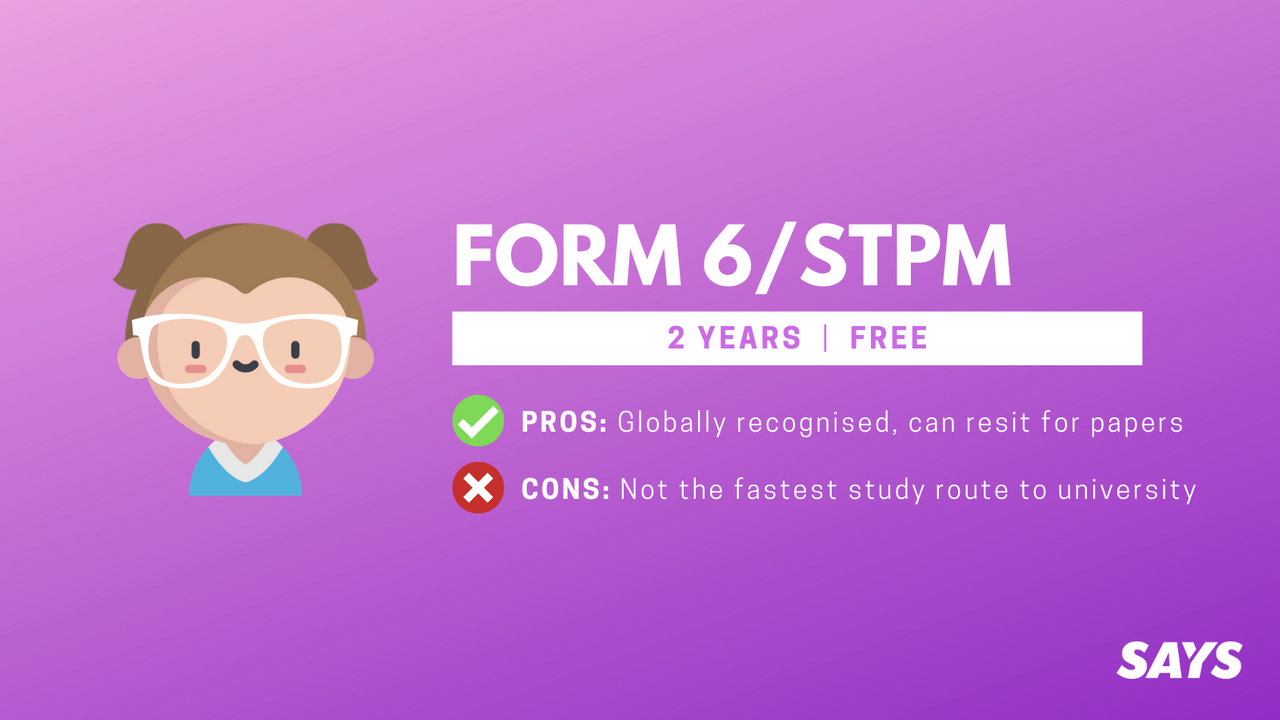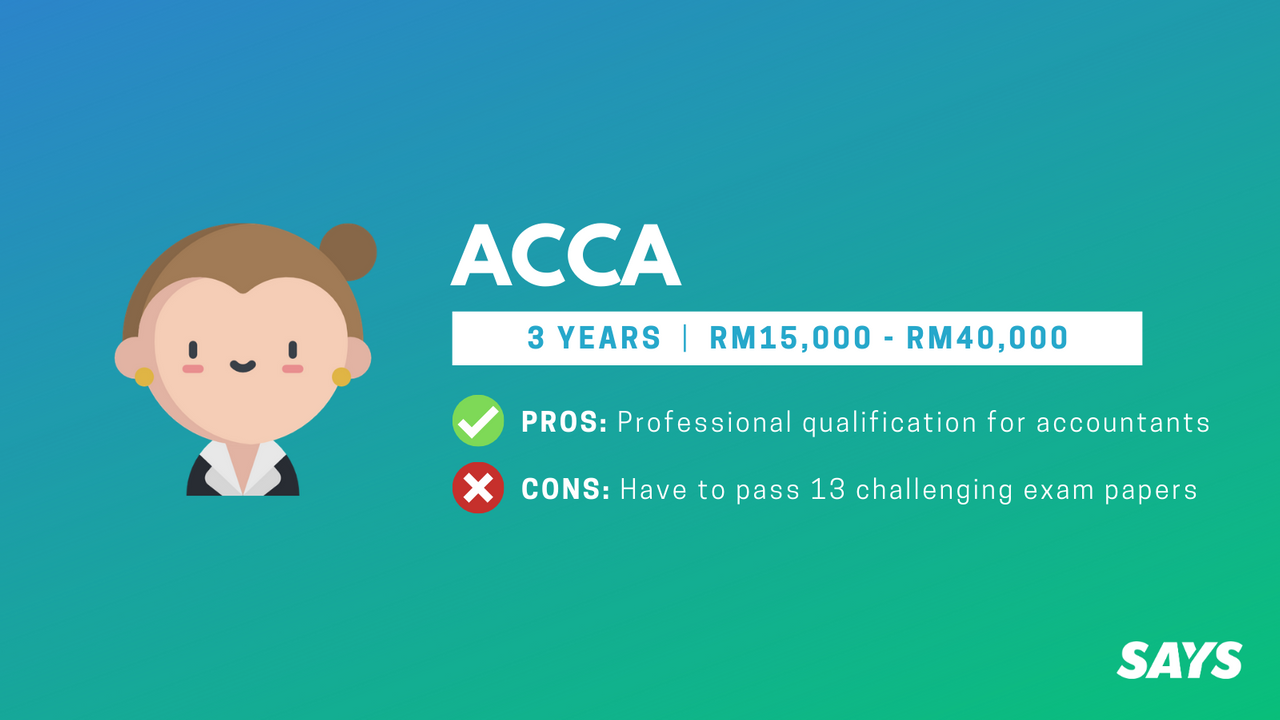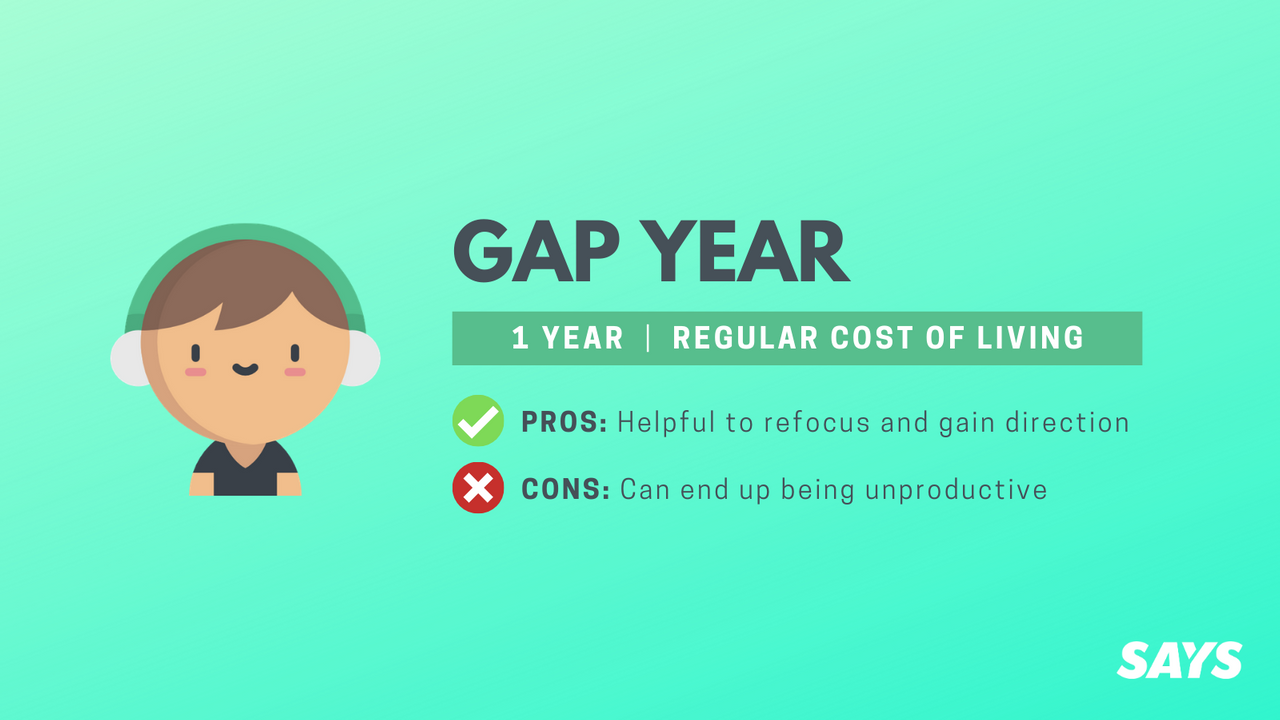Here Are 12 Different Paths To Consider After SPM
A-Levels, Form 6, Foundation... so hard to choose leh!
1. A-Levels: If you like exams and want to keep your options open
A-Levels is a pre-university programme that is 100% exam-based. Following the UK education system, you get to take a minimum of three subjects out of the 60 available subjects. While generally viewed as a difficult course, A-Levels is recognised worldwide and will help you prepare for competitive degrees like medicine or law.
2. Canadian Pre-U: If you prefer coursework over exams
Unlike A-Levels, Canadian Pre-U (ICPU) and Matriculation (CIMP) has a 70% emphasis on coursework, which is good if you enjoy working on assignments.
Not only accepted in Canada, you can also further your studies in the US, UK, Singapore, and other countries. Note that you'll have to complete a minimum of 10 hours of community service before graduating.
3. AUSMAT/HSC/SAM: If you plan on studying in Australia
One of the more popular study options in Malaysia is Australian matriculation programmes like Australian Matriculation (AUSMAT), New South Wales Higher School Certificate (HSC), and South Australian Certificate of Education (SACE), previously known as SAM.
While they each have their own syllabus, they all comprise of 50% coursework and 50% exams. At the end of the course, you will earn a Australian Tertiary Admission (ATAR) rank, which will qualify you for universities in Australia, as well as around the world.
4. ADP: If you're looking to further your studies in the US
American Degree Programme (ADP) allows you to start your degree in Malaysia, and continue the last two years in the US. The unique thing about American degrees is that you spend two years taking general subjects like English, Psychology, and Philosophy, before you specialise in your field of study.
This gives you a more holistic education, but some people may find it unnecessary having to go through so many general subjects.
5. Foundation: If you've set your sights on a particular university
Foundation courses are meant to help students progress from SPM to a degree programme. It also allows you to get a foot into your university of choice. Each foundation course consists of core and elective subjects, which prepares you for university while allowing you to explore different interests.
6. Diploma: If you want the option of working or getting a degree
If you prefer a more hands-on learning experience, you can go with a diploma course. After finishing your diploma, you can either go straight into the workplace or continue with a degree in the same field. The downside is that it's harder to get into top universities or demanding degree programmes like engineering with a diploma.
7. Local Matriculation: If you're keen on local universities
One of the most cost-effective study paths is going into local matriculation. Not only is the course subsidised (you only have to pay minimal fees), you are almost guaranteed a spot in local universities. However, it's not as easy to get into, and once you proceed to public university, you won't always get the degree programme of your choice.
8. STPM/Form 6: If you like the high school environment
Can't get enough of high school life? Continue to study in Form 6 and sit for Sijil Tinggi Persekolahan Malaysia (STPM), which is equivalent to A-Levels. The great thing about STPM is that it's recognised worldwide, which means you can further your studies wherever you want to. You can even resit for your exams multiple times until you get your desired results.
9. TVET: If you prefer hands-on, practical experience
Did you know that 98% of Technical and Vocational Education and Training (TVET) graduates get a job, compared to 60% of university graduates?
That's because TVET equips you with technical skills for the workplace, whether it's in auto body repair, fashion, or culinary arts. Another great thing is that polytechnics and community colleges are often subsidised, which means you only need to pay minimal fees.
10. ACCA: If you know you want to do accounting
If your mind is set on accounting, there are a few ways you can go about to get qualified for the Association of Chartered Certified Accountants (ACCA).
- SPM > Diploma in Accounting > Degree in Accounting > Four ACCA papers > Three years experience
- SPM > A-Levels/STPM > 13 ACCA papers > Three years experience
- SPM > Certified Accounting Technician (CAT) > 10 ACCA papers > Three years experience
11. PISMP: If you would like to become a teacher in Malaysia
To become a teacher in Malaysia, you'll have to apply for the Program Ijazah Sarjana Muda Perguruan (PISMP) programme, usually open for registration in March.
Next, you'll go through a one-year preparatory programme called PPISMP, before continuing on to pursue PISMP for four years. At the end of the programme, you'll receive a bachelor's degree and be qualified to teach in public schools in Malaysia.
12. Gap Year: If you want to take some time to recalibrate
If reading all of this has got you more confused, perhaps what you need is a gap year. Nevertheless, that doesn't mean just staying at home and being unproductive for a whole year.
Go out to do an internship, learn a new skill or language, or volunteer at a non-profit organisation to get some real world experience. Make the most of your gap year by refocusing and deciding what you want to do next! :)
